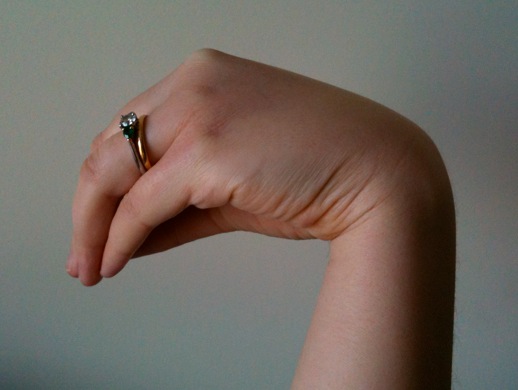Hypocalcemia resident survival guide
| Hypocalcemia Resident Survival Guide |
|---|
| Diagnostic Criteria |
| Causes |
| Focused Initial Rapid Evaluation |
| Complete Diagnostic Approach |
| Dos |
| Don'ts |
Editor-In-Chief: C. Michael Gibson, M.S., M.D. [1]; Associate Editor(s)-in-Chief: Ahmed Zaghw, M.D. [2]; Vidit Bhargava, M.B.B.S [3]
Overview
Hypocalcemia is the lowering of corrected serum calcium level in blood. Clinically it can present as acute or chronic hypocalcemia. It could be due to low level of calcium production or low calcium circulation. Hypoparathyroidism and vitamin D deficiency are the two most common causes of hypocalcemia. Acute hypocalcemia is treated with Intravenous calcium gluconate while chronic hypocalcemia is treated with oral calcium supplements and correcting the underlying cause.
Diagnostic Criteria
- Normal level of calcium is between 8.5-10.5 mgl/dl (2.12-2.62mmol/L). The normal range of ionized calcium is 4.65-5.25mg/dl(1.16 to 1.31 mmol/L). [1]
- Hypocalcemia is low level of corrected serum calcium in the blood. Hypocalcemia is defined as corrected serum total calcium level <8.5 mg/dl (2.12mmol/L).[2].
- It could be acute or chronic.
Causes
Common
- Surgery induced hypoparathyroidism.[3]
- Autoimmune disease induced hypoparathyroidism.[3]
- Malabsorption induced vitamin D deficiency.[3]
- Vitamin D deficiency due to low dietary intake or exposure to ultraviolet light.[3]
Rare
- Hypomagnesaemia.[3]
- Vitamin D resistance.[3]
- Sclerotic metastasis.[3]
- Parathyroid hormone resistance.[3]
- Autosomal dominant hypocalcemia.[3]
Others
- Critical illness.[3]
- Hungry bone syndrome after parathyroidectomy for hyperparathyroidism.[3]
- Post high dose IV treatment with bisphosphonates in vitamin D deficient patients.[3]
- Infusion of phosphates or calcium chelators, such as citrate, with massive blood transfusion.[3]
- Fanconi syndrome.[2]
FIRE: Focused Initial Rapid Evaluation
Focused Initial Rapid Evaluation (FIRE) should be undertaken to identify patients requiring urgent intervention.[3]
| Symptomatic hypocalcemia is characterized by neuromuscular irritability, perioral numbness, carpopedal spasm, laryngospasm, paresthesia of hands and feet, focal or generalized seizures, diaphoresis, bronchospasm, billiary colic, cognitive impairment, personality disturbances, prolonged QT interval and ECG changes that mimic heart failure or myocardial infraction. Symptomatic hypocalcemia or serum calcium <7.6 mg/dL (1.9mmol/L) with unknown cause? | |||||||||||||||||||||||||||||||||
| No | Yes | ||||||||||||||||||||||||||||||||
| Proceed to Complete Diagnostic Approach | 10ml of 10% solution of calcium gluconate is diluted in 50-500 ml of 5% dextrose and administered intravenously slowly over 10 minutes. An infusion of 10mg of the solution over 4-6 hours will serum calcium by 1.2-2mg/dl (0.3-0.5 mmol/l). Oral calcium supplementation should be given concurrently and 1 microgram/day of calcitriol is given if parathyroid is deficient. | ||||||||||||||||||||||||||||||||
| Adjust the rate every 4 hours as required if symptoms persist or recur. | |||||||||||||||||||||||||||||||||
Complete Diagnostic Approach
Physical Examination
- Patient who develop gradual hypocalcemia may be completely asymptomatic while in those patient who has acute hypocalcemia can develop any of these following symptoms.
Characterize the symptoms: ❑ Neuromuscular excitability [3]
❑ Neuropsychiatric symptoms[3]
| |||||||||||||||||||||||||||||||||||||||||||||||||||||||
Obtain a detailed history: [3]
| |||||||||||||||||||||||||||||||||||||||||||||||||||||||
Examine the patient: Vital signs
Pulses
Skin
Musculoskeletal system
 | |||||||||||||||||||||||||||||||||||||||||||||||||||||||
Order labs and tests: ❑ Basic Investigations
❑ Further Investigations
| |||||||||||||||||||||||||||||||||||||||||||||||||||||||
| Low calcium, high phosphate and low parathyroid hormone indicate hypoparathyroidism. Goal of treatment is raise calcium levels and remove the symptoms. 1 to 1.5 g of elemental calcium is given orally as calcium carbonate or calcium citrate. 0.25 mcg of calcitriol is also given as twice daily with weekly increments to achieve low- normal serum calcium. | Family history of hypocalcemia can indicate the autosomal dominant hypocalcemia. Asymptomatic patients require no treatment. | Low calcium, low phosphate and low vitamin D levels may be due to vitamin D deficieny. 50,000 international units of vitamin D2 or D3 is given weekly for 6-8 weeks. | Symptomatic hypocalcemia with high blood urea nitrogen and serum creatinine indicates chronic kidney disease. Treatment includes oral calcium and active form of vitamin D | Hypercatabollic state(trauma, tumor lysis syndrome) requires the correction of phosphate levels before you correct the calcium level. Symptomatic hypocalcemia requires hemodialysis. | Pseudohypoparathyroidism requires 0.25 mcg of calcitriol for twice daily. | ||||||||||||||||||||||||||||||||||||||||||||||||||
Treatment
Treatment of Acute Hypocalcemia[4] Treatment of mild or chronic hypocalcemia[4] | |||||||
Dos
- Serum calcium concentrations should be measured frequently during pregnancy and lactation. [4]
- In patients with hypo or hyperalbuminemia, the serum calcium measured must be corrected for the standard units and abnormality in albumin.[4]
- In patients with asymptomatic hypocalcemia, repeated measurement of the ionized calcium or total serum calcium corrected for albumin must be done to determine whether there is a true decrease in calcium.[4]
- As concentrated calcium can cause vein irritation, calcium should be diluted in water or dextrose and saline before IV administration in acute symptomatic hypocalcemia.[4]
- For hypoparathyroidism urinary and serum calcium and serum phosphate are measured weekly until stable levels are achieved.[4]
- For hypoparathyroidism induced hypocalcemia, urinary calcium excretion is measured periodically to check for hypercalciuria and dose of calcium and vitamin D is reduced if needed.[4]
Don'ts
- Do not administer IV calcium gluconate for mild or chronic hypocalcemia.[4]
- Don't take the total serum calcium with high or low serum albumin as an estimate of hypocalcemia.[4]
- IV calcium gluconate should not contain phosphate or bicarbonate as it can form insoluble calcium salts. If they are needed, must be administered through separate limbs.[4]
- Hypercatabolic states (such as tumor lysis syndrome or massive trauma) induced acute hypocalcemia and hyperphosphatemia should not be treated with calcium until the hyperphosphatemia is corrected to prevent the precipitation of calcium-phosphate.[4]
References
- ↑ "Hypocalcaemia".
- ↑ 2.0 2.1 2.2 2.3 Fong J, Khan A (2012). "Hypocalcemia: updates in diagnosis and management for primary care". Can Fam Physician. 58 (2): 158–62. PMC 3279267. PMID 22439169.
- ↑ 3.00 3.01 3.02 3.03 3.04 3.05 3.06 3.07 3.08 3.09 3.10 3.11 3.12 3.13 3.14 3.15 3.16 Cooper MS, Gittoes NJ (2008). "Diagnosis and management of hypocalcaemia". BMJ. 336 (7656): 1298–302. doi:10.1136/bmj.39582.589433.BE. PMC 2413335. PMID 18535072 PMID: 18535072 Check
|pmid=value (help). - ↑ 4.00 4.01 4.02 4.03 4.04 4.05 4.06 4.07 4.08 4.09 4.10 4.11 "Uptodate".